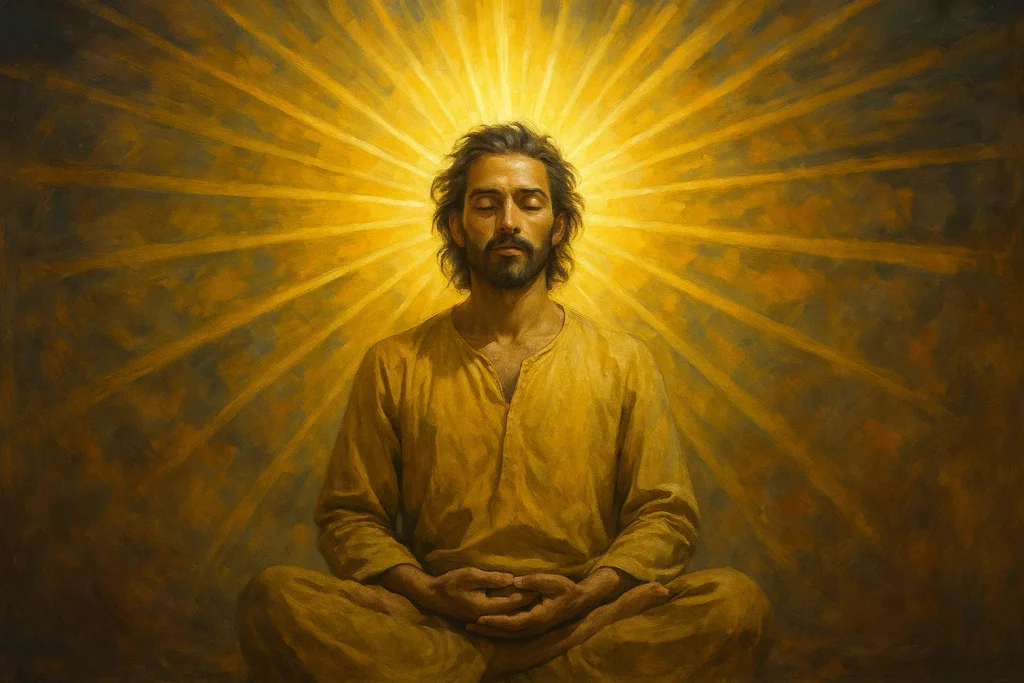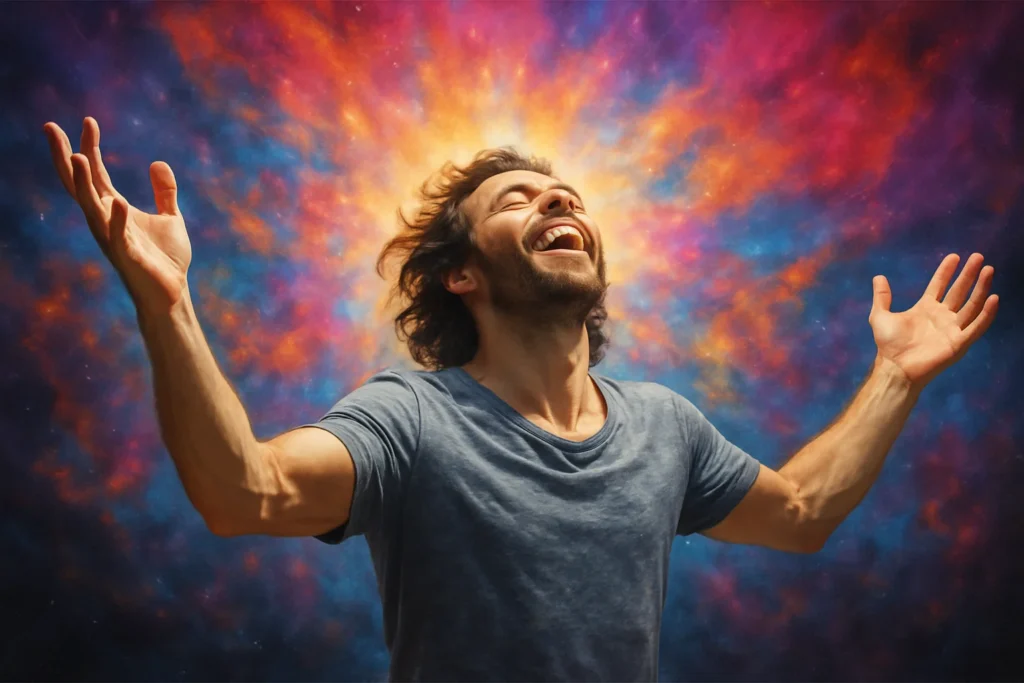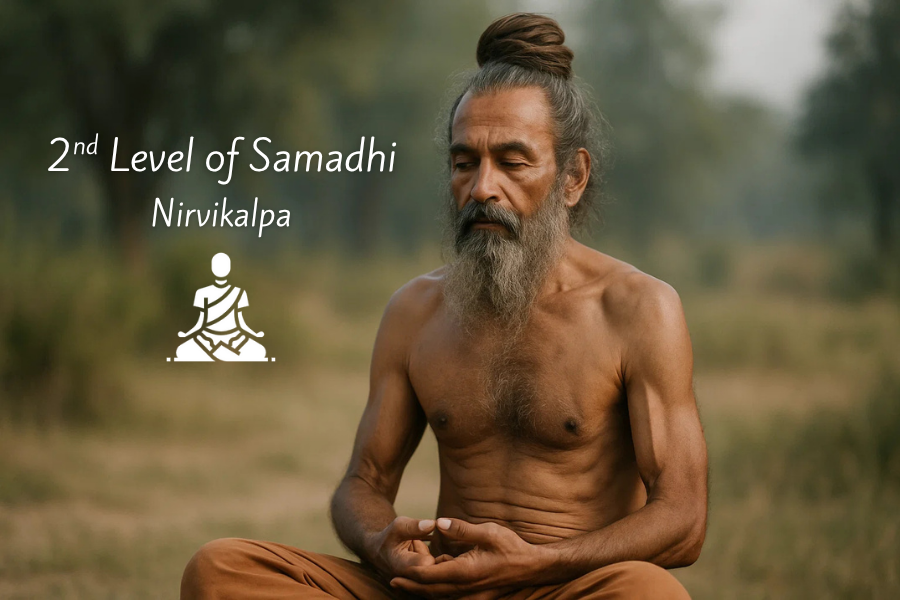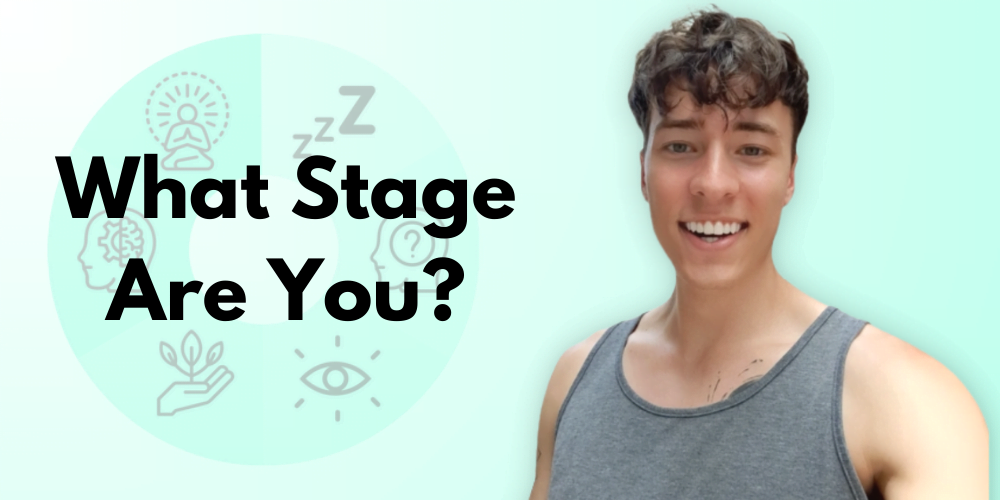Dharmamegha Samadhi is the final state before complete liberation (kaivalya). This is state in which the soul is not just free from the world, but free from the very need for freedom.
Dharmamegha means “cloud of virtue” or “cloud of dharma.” Referenced in Patanjali’s Yoga Sutras (Book IV, verse 29) as the final samadhi beyond Nirvikalpa. It’s characterized by being beyond even the desire to be achieve liberation.
In this state:
- The yogi no longer seeks liberation because the idea of a separate self to be liberated has dissolved.
- The mind is completely still, not just temporarily but permanently.
- Divine knowledge and spontaneous virtue arise effortlessly.
This state is not a trance or an experience of bliss. It is the purest, most unconditioned state of freedom.
How It Differs from Other Samadhis
| Samadhi Type | What Remains |
|---|---|
| Savikalpa | Thought, meditation object, ego |
| Nirvikalpa | Formless awareness, free from all thoughts |
| Dharmamegha | Nothing but pure being. No craving, no karma, no identity |
Unlike Nirvikalpa, where there is still a trace of the meditator who returns to tell the story, Dharmamegha leaves no one behind. The yogi becomes a clear sky through which the divine shines.
Characteristics of Dharmamegha Samadhi
- No clinging to virtue, knowledge, or freedom
- All karma is erased
- No ego, no self-reference, no trace of “I”.
- The yogi may function in the world, but there’s no attachment to doing, knowing, or becoming.
Patanjali describes this as the state in which kaivalya is attained.
How Does One “Reach” Dharmamegha?
Ironically, you can’t.
Dharmamegha is not a state you reach through technique. It’s the result of grace and surrender.
To reach this third level of samadhi you can:
- Live an ethical, truthful, and humble life
- Practice meditation to reach the previous levels of samadhi
- Surrender to divine grace when it arises
People do not aim for Dharmamegha. They simply walk the spiritual path with love and sincerity and when all seeking falls away, it arises.
Is Dharmamegha Samadhi Enlightenment?
Yes, it is a form of enlightenment.
In yogic terms, Dharmamegha is the final phase before utter enlightenment becomes permanent.
While other samadhis come and go, Dharmamegha is a non-returning state. Once this level is attained:
- There is no more karma to fulfill.
- No rebirth is necessary.
- The soul is destined to merge completely with the Absolute.
Dharmamegha Samadhi vs Kaivalya (Liberation)
| Stage | What It Is | Relation to Liberation |
|---|---|---|
| Dharmamegha Samadhi | Final spontaneous samadhi | Immediately precedes kaivalya |
| Kaivalya | Absolute aloneness of the Self (beyond samadhi) | Liberation itself |
FAQs About Dharmamegha Samadhi
Is Dharmamegha Samadhi the same as Nirvikalpa Samadhi?
No. Nirvikalpa is deep formless absorption, but one may return from it. Dharmamegha marks the final loss of identity and karma. It’s not a temporary state.
Can Dharmamegha Samadhi be practiced into?
Not directly. It arises spontaneously. Dharmamegha samadhi arises through grace when all seeking has fallen away from the seeker.
What happens to someone who enters Dharmamegha Samadhi?
Externally, they may seem ordinary. But internally they are pure being. Actions are spontaneous and untainted by ego.
Hi, I’m Ryan. I’m a meditation teacher, spiritual seeker, and founder of nurtureyourspirit.org. I’m glad you’re here! I founded Nurture Your Spirit because of my love of meditation, spirituality, and spiritual awakening.





